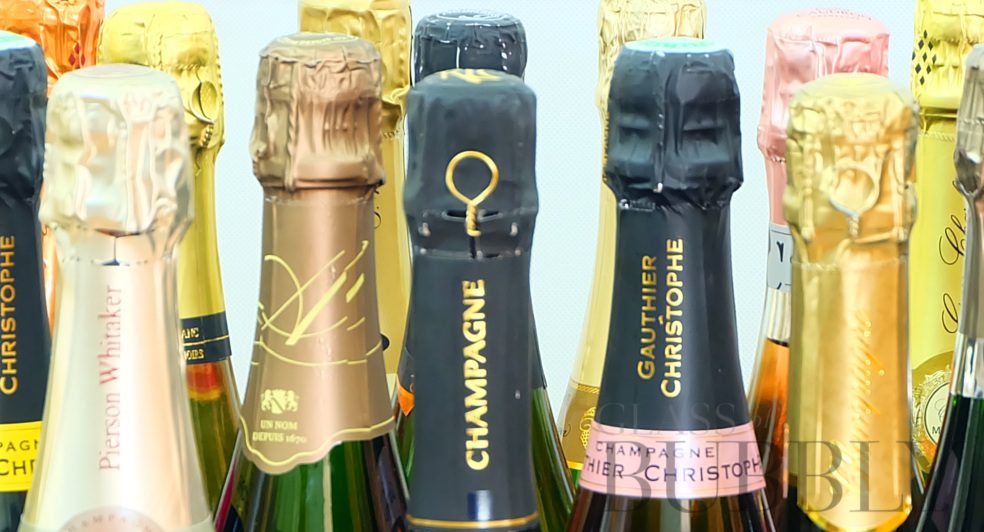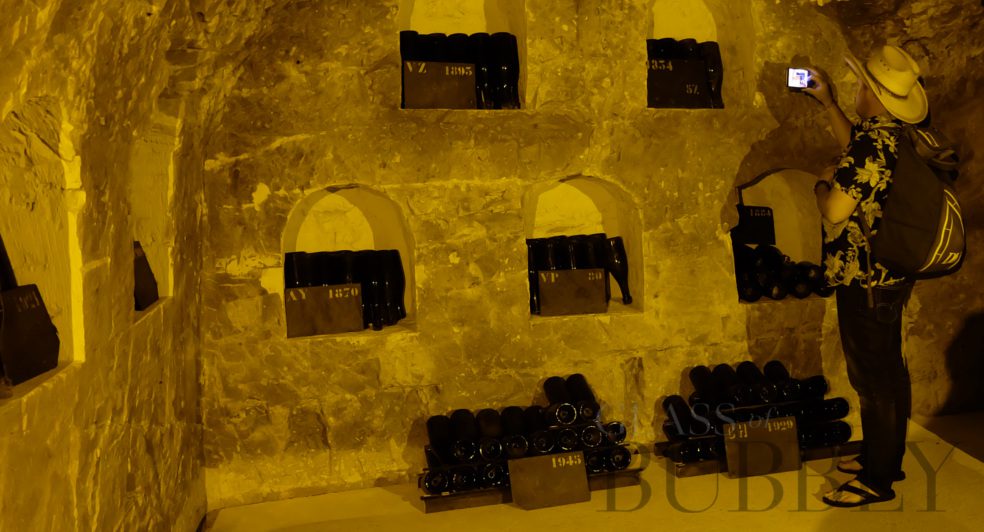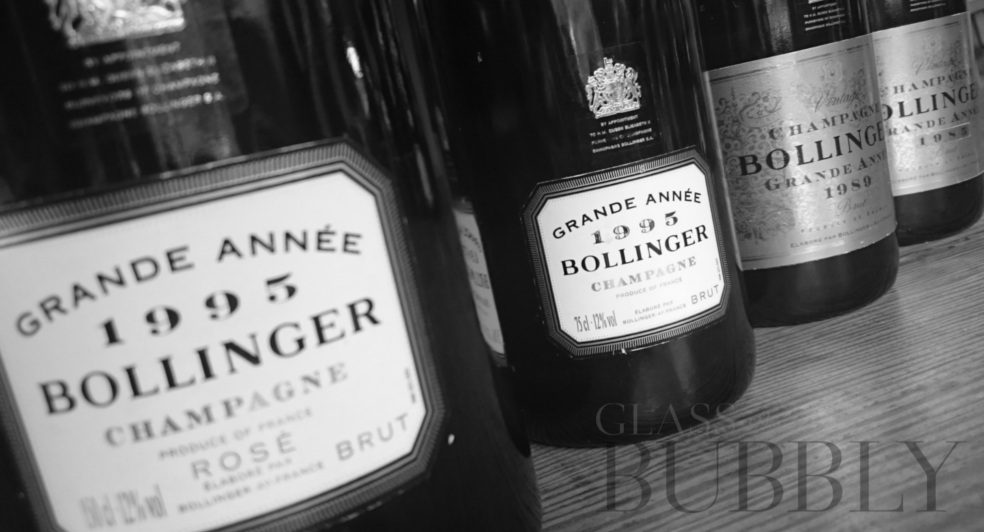Champagne Collecting
7th February 2022
There’s one thing being a fan of Champagne and getting to enjoy tasting through many fine examples and embracing the tourism side of things by visits to the wine region itself, but what about the collecting side?
Many of us I’m sure can admit to collecting something or other during our lifetime, be it those childhood days of stamps, coins and keyrings to adult life with the likes of art, books, sci-fi memorabilia. Funny enough, booze is also a frequent theme that attracts collectors globally with beer, spirits and wine all having their fair share of enthusiasts.
There is so much you can collect and many serious collectors will focus on one topic / name / theme. From beer mats to wine barrels, Champagne posters to whiskey decanters each topic holds great depth and history which in turn keeps the collectors endlessly occupied and collections added to.

Champagne holds many labels by many winemakers
For our article, we are going to concentrate on Champagne collecting and sticking to bottles (unopened). With thousands of wineries each with many varieties of labels and vintages, we have the opportunity to embrace the hobby of collecting.
There are two main reasons that people look to collect. Firstly it is a pastime and many enjoyable hours of research can be had in building a collection involving also trips to and from the Champagne region as well as localised trips such as to specialised auctions. Secondly, it is about investing where bottles are purchased for either an immediate return in profit or are laid away and stored safely for increasing their value. Both the pastime and investing side of collecting Champagne will also involve plenty of drinking too so to reward your efforts!
One thing that I noted when visiting Champagne houses were the vast amount of vintages deep down in the cellars that were there primarily for special orders or collectors. These were the bottles that had countless years worth of dust and mould on, the prices of which were far above what you’d normally think about paying for Champagne in high street / superstore outlets. The more aged bottles, usually towards the beginning of the 20th century and before would be likely to held under lock and key or specialised corners of the chalk cellars – No longer available to be purchased and purely for the wineries most special occasions and guests (though as I constantly heard, ‘they are not for sale, but we sometimes can be tempted with offers!‘).
So Collecting Champagne for Investment
Demand for Champagne has been constant for many years now. Though from time to time the sales figures can show slight decreases / slight upward spikes, it is a relatively steady climb of sales which is dictated to only by harvest volume / quality and also global economical climates (a large % of Champagne is exported annually with UK, USA and Japan being popular destinations). The size of the Champagne vine growing region remains fixed so the volume remains steady, but as the popularity of this sparkling wine continues to increase with ease of accessibility, as well as the global population expansion continuation, then demand pushes upwards.

Vintage Champagne Labels under lock and key in Cellars
Things to consider
- Storage: If you are to consider collecting Champagne then, dare I say, the most important thing to consider is where will you be storing them? There are professional external options such as bonded warehouses though these come with monthly costs (which is fine for those collectors dealing with larger volumes). You can also store Champagne at home under strict conditions such as protecting against light, fixed temperatures, constant stability – Options such as Spiral Cellars or internal / external wine storage rooms with cooling systems and dehumidifiers can provide you with the perfect solution (at costs and only if you have the space required).
- Finance: To be a serious collector of Champagne you will need to be able to purchase in bulk (at least cases of 6 and above) and invest in the finer Champagne houses which will come with a premium cost. You will also have to consider investing in travel costs as there is no better way to understand Champagne collecting than by visiting the region itself.
- Knowledge: You will need to know your Champagnes very well not only basics such as understanding labels, but also having the vision to appreciate what will age well and which labels will increase in demand.
Top Tips for Champagne Collecting
- Not all Champagne age well. Not all Champagne will increase in price the longer you hold it.
- Investigate lesser known up and coming smaller grower Champagne houses.
- Purchase at least 6 bottles (1 x case).
- Keep an up-to-date inventory including storage location / box numbers / racking position etc.
- Get involved in Champagne clubs / industry news / critic reviews.
- Get yourself a name in the industry for both buying and/0r selling of Champagne (include social media profiles to this action).
- Think outside the box – Not all Champagne will be in plain sight or in obvious locations*
* I wanted to elaborate on this one as I have seen Champagne at wine auctions to include Christie’s and also found bottles at the location second hand store in the high street (house clearance firm). I have purchased Champagne from eBay and plenty of times via Facebook marketplace – Dare I say I have also risked buying Champagne at a boot sale once! Champagne does not only appear at the specialist locations, it can appear where you least expect it to.
Many people will hold wine collections at home, especially those left to them as gifts / in wills and many will have little interest in them and certainly little knowledge of their worth. These are worth trying to target either by localised adverts or spreading the word on the ground about your interest in Champagne. Countless times I have been approached to either value single bottles or small collections and also I have been offered wines to purchase with most of these people having little to no knowledge of wine.

Vintage Champagnes labels
“Just the other day I noted someone selling a box of Rioja wines on Facebook. Upon a quick chat and me turning up to his house he presented countless boxes of wines that had been left to him which were left in the cellar. Though 90% were cheap and not worth the risk of even tasting to review (these I took to the local tip), hidden away were some finer Burgundy and vintage well known name Champagnes. For just the £50 asking price I had several labels to add to my collection (I tested one bottle for quality and it performed excellently).”
Look out for special labels
- Vintages: These will be the finest wines from the best years chosen by the winemaker (vintages can be both old and relatively new years).
- Prestige Cuveé: Made from the top vineyards / parcels and using the finest of grape juices (first press).
- Special Cuveé: Made from the top vineyards / parcels and using the finest of grape juices (first press).
- Edition Limitée: Sometimes a special release (cuveé) enters the market that will be limited in production.
- Magnum / Jeroboam: 2 x standard bottle size and 4 x standard bottle size respectively. It is said Champagne ages better in Magnums and potentially Jeroboams also.
Big Name Brands vs Grower Labels
The big brands as names such as Krug, Louis Roederer, Veuve Clicquot, Dom Pérignon and others will be world famous and always in high demand. The grower labels are from smaller lesser known producers which some have little to no exporting outside of France.
With big name brands, you will be paying a premium to purchase though you can more or less guarantee a steady increase in value as they age and their demand increases. What you purchase you will definitely sell as these labels are known for their ageing potential and highly unlikely to ever fall out of favour with consumers.
Grower labels are slightly cheaper to purchase and will require that bit more selling effort when it comes to a return on your investment. Will they perform well in years to come as you age them and will there be an adequate demand to give you a profit? With clever purchasing though and especially if you hit upon a winery that is in the throws off increasing their brand awareness, you would be buying cheap and selling for prices to match the big name brands.
![]()
Christopher Walkey
Co-founder of Glass of Bubbly. Journalist and author focused on Champagne & Sparkling Wines and pairing them with foods.
